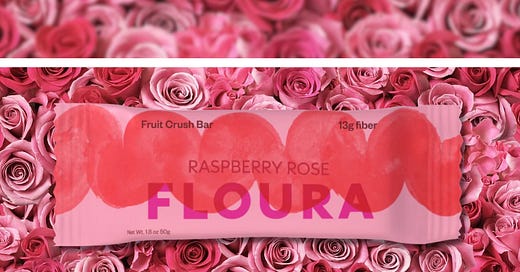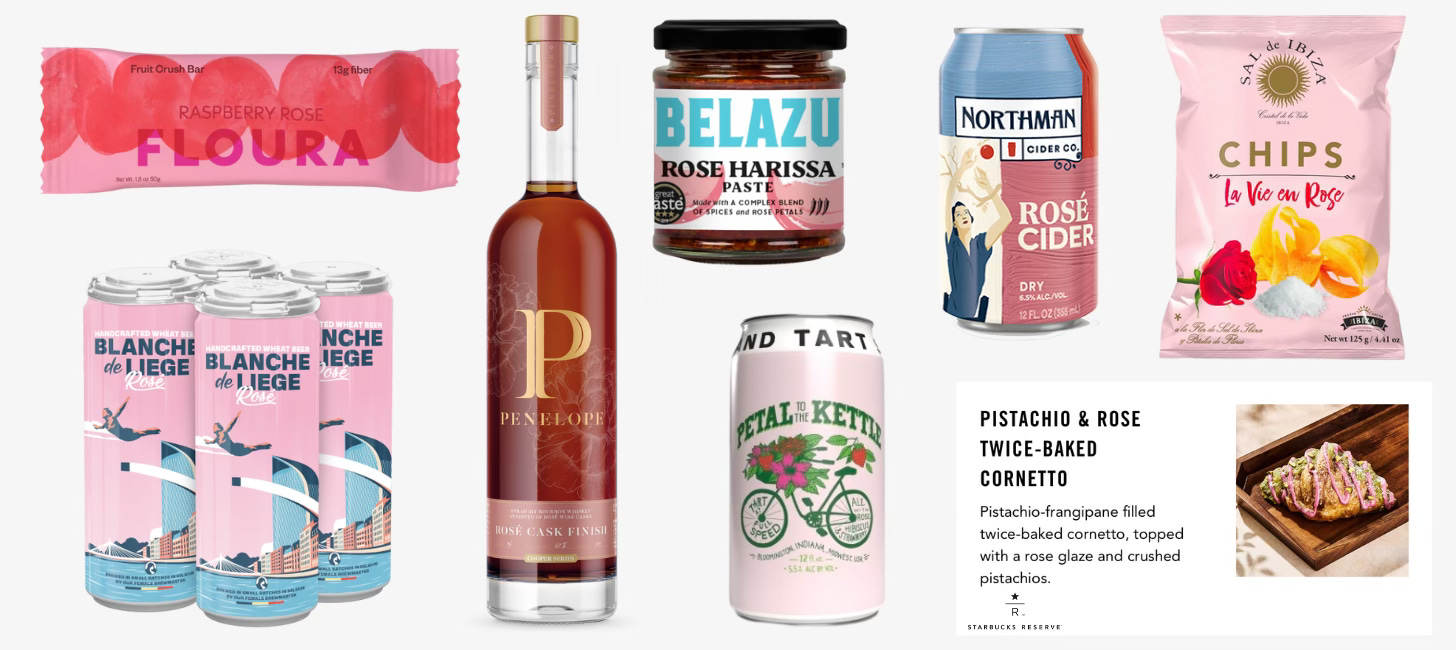Blush Boom. Copycat Cosmetics. Selling Air.
And the shadiness of tanning beds moonlighting as 'wellness'.
Our brand banter between London and Chicago this month…
From London (Mia)
I couldn’t believe my eyes when I popped into Target’s beauty aisle on a recent trip to Chicago. Beauty dupes have always had a solid place in the industry, offering savvy options for consumers who want similar performance without the luxury price tag. Maelove’s Glow Maker (£31) has become my ride-or-die when my wallet can’t stretch to Skinceuticals (£165), for example. Dupes tend to share functional similarities but stop short of copying a brand’s identity. The packaging, the naming, and the marketing remain clearly distinct. But what brands like MCoBeauty are doing is an entirely different game.
Founded in Australia in 2020, MCoBeauty has built a billion-dollar empire (its founder, Shelley Sullivan, recently stepped down as CEO, after selling the business at a valuation “north of $1 billion” to DBG Health) by mimicking the design, naming, and packaging of successful products while skating just inside the bounds of legality. Dupes once carried a certain underground ingenuity—word-of-mouth discoveries where packaging looked nothing like the original, but performance was comparable. What we’re seeing now is, instead, a calculated strategy to create confusion and shortcut success. And while the burden of ethical innovation shouldn’t rest on shoppers’ shoulders, I’m glad to see younger consumers beginning to call out the tackiness of aggressive mimicry disguised as “making beauty accessible.” Beauty thrives on innovation, storytelling and cultural influence. Copycatting contributes none of that. It’s on the industry to start setting more defined legal standards and hold companies accountable when they cross the line from clever competition and intellectual property theft. Because if imitation becomes the growth strategy, where does that leave the future of innovation?
It’s hard to walk more than a few blocks in London these days without spotting some form of brand merch creeping into lifestyle spaces. From Heinz ketchup tote bags at Waitrose to Guinness knits, food and beverage brands are increasingly turning themselves into fashion and lifestyle ‘must-haves’ to build cultural capital and expand revenue streams beyond their core products. Turning consumers into walking billboards while monetising brand love? Big business.
Just when we thought tanning beds had been relegated to the cultural dustbin of the early 2000s, they’re back. Gen Z, a generation raised on SPF 50 and skin-cancer PSAs, is now embracing red light therapy and tanning routines as part of their wellness ‘protocol’ (damn you, Huberman, for the excruciating overuse of this word), driving a surge in sunbed use despite the well-documented health risks. New tanning salons are opening across the UK, selling ‘glow’ as self-care and blending aesthetic goals with biohacking language to reframe UV exposure as a therapeutic ritual. Yesterday’s health hazard has become today’s health hack. Hard to watch.
Sharing my latest packaging copy for PepsiCo’s Wotsits brand. This one was fun.
From Chicago (Ellen)
Everything’s turning up rose and rosé this spring. There’s a newish corner store on the northside of Chicago that I’ve started to frequent to scout emerging patterns in flavors and foodstuffs. It’s essentially Foxtrot for anyone too cool to frequent a chain. Like Foxtrot, its selection is random, highly curated, and pricey. I go there because it’s like stepping into a foodie’s fantasy— there are threads of wildly enticing flavor stories unfolding down every aisle. This month, I couldn’t turn a corner without running into rose or rosé… and I never stepped foot in the wine section. Although these two flavor profiles have been popping up here and there for several years— especially in functional drinks and chocolate— they’re now in more rugged and pedestrian (read, “Midwestern-born”) forms too: beer, bourbon, even snack bars.
Poor man’s caviar or savory boba? Australian brand, Sticky Balsamic, recently brought their delectable little jarred balsamic pearls to the U.S, and I spotted this fast-follow at my local Whole Foods. Although they’re not cheap at $12-$15 per miniature jar, they’re a fraction of the cost of a comparable amount of caviar (and honestly, way less “eww”). I love this lateral lift assuming the idea for balsamic pearls was inspired by caviar (hence all of the bougie mood imagery and over-done packaging). That said, I think there’s something boba-ish going on here too. After all, boba popularized the appeal of flavor-bursting jewels and that’s exactly what these balsamic pearls are. It begs the question, “What else could we pearl?” Soy, salad dressing, honey…
Speaking of lateral lifts, Crown Affair takes the cake. CA is probably best known on the brand scene for rising to fandom fast through a combination of homegrown influencer marketing and speed to retail (most of which you can read about here or check out in founder Dianna Cohen’s newsletter). But none of that would have moved the needle if Cohen and team weren’t also masters of manipulating lateral intel to the needs and habits of hair hopefuls. Their latest lift from the perfume category taps the insight that hair, like body, can delight with its own signature scent. Or how about this lift from the jewel adornment trend that is spreading across everything from shoes and purses to mouthguards. These are good, but my hands-down favorite is how the hair brand has borrowed the concept of seasonal must-haves and capsule collections from fashion. The slick back set in spring, air dry collection in January— they bring new meaning to “spring refresh” and “winter arc” for a lot of Sephora shoppers.
And finally, in my tariff response corner… It’s no secret that brands are going to be looking at everything from price hikes to quantity and size reductions to weather the impact of our current global trade mess. In many categories, these changes are already in place. But one lesser explored solution that could work for some is form innovation. Take Vacation and Daise’s introductions of air-whipped product. Or Ocean Spray’s new powdered water enhancers. For starters, shipping air and powder is downright cheap vs. their heavy liquid and lube alternatives. (There’s some cost savings.) And, in the case of Vacation and Daise, they’ve delivered something new to the category that’s literally intoxicating. I have to imagine the speed of consumption of their air-whipped product exceeds that of traditional forms tenfold. It’s fun (or “satisfying” as my inner teen girl likes to say) and a goldmine. They’re effectively selling air at a premium!
In case you’re wondering, our mentions and links are never sponsored.








